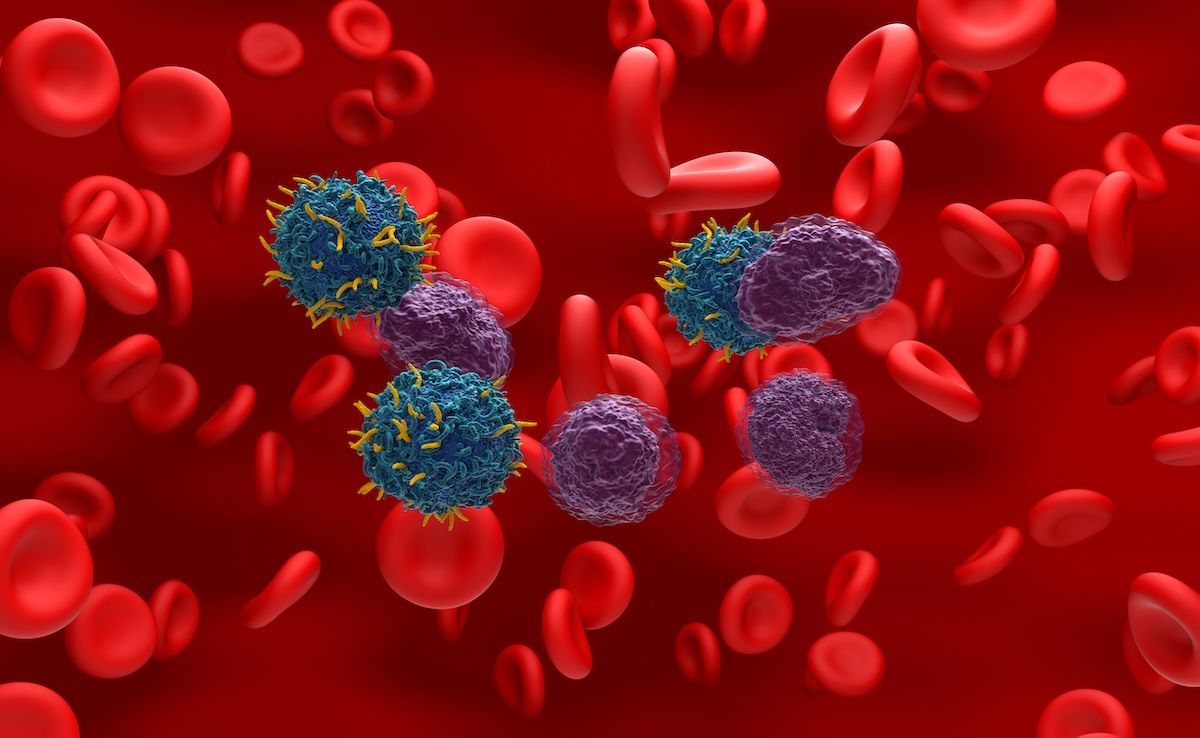News
Article
Functional Precision Medicine Tool Predicts Treatment Response in AML
Author(s):
Key Takeaways
- QPOP demonstrates high accuracy in predicting AML treatment responses, with 87.3% success in generating individualized drug sensitivity reports.
- QPOP revealed drug resistance mechanisms and predicted drug responses without relying on genomic biomarkers.
A new study evaluating the quadratic phenotypic optimization platform shows it can accurately predict personalized drug combination sensitivities, paving the way for improved treatment strategies and outcomes in acute myeloid leukemia (AML).
Despite progress in targeted therapies, the treatment of acute myeloid leukemia (AML) remains challenging due to persistent issues with relapse and treatment resistance. A recent study published in Cancer Medicine evaluates a functional precision medicine tool aimed at overcoming these challenges through personalized drug response prediction.1
In a small subset of cases, myeloproliferative neoplasms (MPNs) can progress to AML, and outcomes are often poor in these cases.2 There are no standardized treatment strategies for AML secondary to MPNs.
Among the 55 evaluable samples analyzed, QPOP achieved an 87.3% success rate in generating individualized drug sensitivity reports. | Image credit: Eleni - stock.adobe.com

The current research focuses on the quadratic phenotypic optimization platform (QPOP), which demonstrated the potential to streamline patient drug selection based on combinatorial drug sensitivity testing in AML. The platform operates through ex vivo drug testing, analyzing patient-specific cellular responses to combinations of drugs. The trial achieved a rapid turnaround time, with a median of 5 days (range 4-10 days) from sample collection to report generation.
In this study, 51 patients with AML were enrolled, including both newly diagnosed (ND) and refractory/relapsed (R/R) cases. Among the 55 evaluable samples analyzed, QPOP achieved an 87.3% success rate in generating individualized drug sensitivity reports. To assess clinical feasibility, the researchers compared QPOP-predicted responses to actual clinical treatment outcomes. The analysis revealed high concordance, with 83.3% sensitivity, 90.9% specificity, and an overall accuracy of 86.2%, suggesting that QPOP could be a valuable tool for predicting AML treatment responses.
Researchers highlight QPOP's ability to assess combinatorial drug effects, an area where traditional methods often fall short. The study extensively analyzed the azacytidine-venetoclax (AZA-VEN) regimen, a standard treatment for newly diagnosed (ND) patients and patients with refractory/relapsed (R/R) AML. Among 11 patients treated with AZA-VEN—7 with ND, and 4 with R/R—QPOP correctly predicted clinical response in 80% of cases, with a specificity of 100%.
Beyond AZA-VEN, the platform identified alternative drug combinations, such as fludarabine-cytarabine and fludarabine-venetoclax, as promising alternatives to standard therapies like AZA-VEN, particularly in ND patients and those with intermediate or favorable European LeukemiaNet risk classifications. For R/R cases and those with adverse risk profiles, where standard treatments often fail, these alternatives could lead to reduced exposure to less effective therapies and optimized patient outcomes.
In one case, serial QPOP analyses of a patient with an FLT3 mutation revealed a gradual decline in sensitivity to FLT3 inhibitors (FLT3i) over time. This decline correlated with an increasing FLT3 allelic burden, reflecting the development of drug resistance. Interestingly, QPOP also demonstrated the ability to detect FLT3i sensitivity in patients who did not have FLT3 mutations. "This further reiterates QPOP's ability to predict effective drug response without reliance on genomic biomarkers," the researchers noted. In addition, the study uncovered molecular mechanisms of drug resistance, such as the AKT-FOXM1 axis, which emerged as a critical pathway contributing to FLT3 inhibitor resistance.
"Overall, this study demonstrates the feasibility of applying QPOP as a functional combinatorial precision medicine platform to predict therapeutic sensitivities in AML and provides the basis for prospective clinical trials evaluating ex vivo-guided combination therapy," the study authors noted, adding that the platform's utility extends beyond AML treatments. Previous studies have demonstrated QPOP's efficacy in predicting drug responses for other malignancies, including non-Hodgkin lymphoma and multiple myeloma.3,4
Studies have shown that functional precision medicine has successfully incorporated ex vivo functional test results into complex tumor board decision processes.5,6 However, they face limitations such as reliance on single-drug sensitivity, which may not reflect combinatorial effects or dependence on time-intensive molecular profiling. Researchers point out a "need for improved combination treatment selection guidance for patients in a clinically relevant time frame." QPOP's ability to rapidly assess combination therapies could potentially fill this gap in clinical practice.
References
1. Sahib NRBM, Mohamed JS, Rashid MBMA, et al. A combinatorial functional precision medicine platform for rapid therapeutic response prediction in AML. Cancer Med. 2024;13(22):e70401. doi:10.1002/cam4.70401
2. McKinnell Z, Karel D, Tuerff D, Sh Abrahim M, Nassereddine S. Acute Myeloid Leukemia Following Myeloproliferative Neoplasms: A Review of What We Know, What We Do Not Know, and Emerging Treatment Strategies. J Hematol. 2022;11(6):197-209. doi:10.14740/jh1042
3. Snijder B, Vladimer GI, Krall N, et al. Image-based ex-vivo drug screening for patients with aggressive haematological malignancies: interim results from a single-arm, open-label, pilot study. Lancet Haematol. 2017;4(12):e595-e606. doi:10.1016/S2352-3026(17)30208-9
4. Rashid MBMA, Toh TB, Hooi L, et al. Optimizing drug combinations against multiple myeloma using a quadratic phenotypic optimization platform (QPOP). Sci Transl Med. 2018;10(453):eaan0941. doi:10.1126/scitranslmed.aan0941
5. Liebers N, Bruch PM, Terzer T, et al. Ex vivo drug response profiling for response and outcome prediction in hematologic malignancies: the prospective non-interventional SMARTrial. Nat Cancer. 2023;4:1648-1659. doi:10.1038/s43018-023-00645-5
6. Malani D, Kumar A, Brück O, et al. Implementing a functional precision medicine tumor board for acute myeloid leukemia. Cancer Discov. 2022;12(2):388-401. doi:10.1158/2159-8290.CD-21-0410





